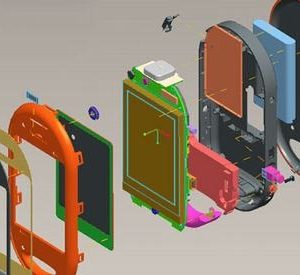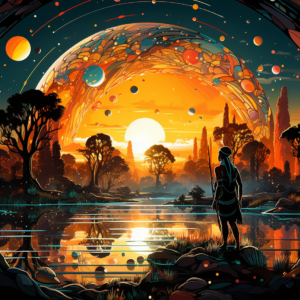Last summer, while attending and presenting two papers at the Design Research Society conference in Boston, I joined Design As podcast host Lee Moreau for a conversation on the most important thing I saw. I right away said: “The pluriverse.” I am glad he included me in the conversation with two of the most important design researchers in bringing this concept to design research: Dr. Renata Leitão and Dr. Lesley-Ann Noel.
I began by sharing why I had moved to the United States in 2023:
I previously were at Brazil’s Federal University of Technology Paraná, publicly funded university that had a lot of student quota for low income students, Black students, and people that were, as we say, oppressed. I was trying to make sense of how design can be useful for these people. They usually don’t take courses in design because they believe this is just producing luxurious services and products that they will never be able to afford. Then we founded this laboratory of design against oppression, LADO. We started to develop project design projects with communities of oppressed people that were nothing like luxurious service or products. Students started to pour in and become interested on the social responsibility of design. How can design actually be part of this uplifting process that Brazil as a developing nation, is going through? […] The University of Florida gave me the opportunity to try these things here and check whether design can be part of this process of uplifting, of developing further and having more equality or equity and other qualities that we lack in this unequal societies where things are separated from each other, in a word, fragmented. We see design—actually, we practice not just see design—as a means to connect people and have hard conversations while we make something, and that making leans towards the point that it can be manufactured or be reproduced on a larger scale like a service that has been designed. (Excerpt from Design As Pluriverse)
Moving on, I described how I see the current challenge of US multiculturalism:
This new role is about, first of all, to make sense of this multicultural formation of the United States and the ways how this has kept people apart from each other. So, basically, I’m still learning about it, but it seems like the U.S. tries to create spaces and positions and roles for people that come from different cultures so that everyone feels included, but at the same time everyone feels excluded from other groups. Especially through hierarchies, because some groups, some spaces have better resources, more accumulated things at hand. I started to question that through design. Can we create situations where we speculate about futures, where we actually create transitional strategies or services that can help us move towards a society where these resources are more distributed? (Excerpt from Design As Pluriverse)
The word distributed is precious here. The US is not merely a matter of concern for me; it is also a source of inspiration. An American, or should I say, a Californian ideology, inspired me when I began practicing interaction design in the 2000s:
… that always brings me back to how I started this, because U.S. has been very influential on my own upbringing through this concept of free software or open source software, as you prefer to call it here. I know that there’s a difference because I learned from countercultural people from California, but also other places, New York. They were always inspiring me at the beginning of my career to study design as a means to overcome oppression. They would say design or, in that case, free software should support people in their fight for freedom. People should use technology in the way they need, especially to help someone else. At some point, I started to think about, well: Can we design for freedom? (Excerpt from Design As Pluriverse)
When writing Design Livre, we stumble upon this question: if we are going to share design code like computer programmers do, what is the code of design? That is undoubtedly not computer-readable code like programming languages. Now I realize that design code is not restricted to a language. Back to Lee, I said:
You could say that design has some language. But I believe there’s a lot of materiality that goes beyond language. For example, all these tactile properties of stuff around us. These are all design features that we copy and we adapt and we change over and over through our culture. And that’s why U.S. is really a very important place to be, I want to learn and develop further design. Because of this multicultural formation, we can see so many traditions of materiality and shaping worlds. However, some worlds are not very respectful to other worlds, and they use that materiality against other worlds to coexist. (Excerpt from Design As Pluriverse)
The first example that comes to my mind is hostile architecture.

Many other oppressive designs have this purpose of keeping worlds apart.
Pluriverse is one of the answers the design research community has focused on. They didn’t invent the term. They are drawing from other areas. But what is unique from the pluriversal design approach emerging now is that we are not just not reducing language and discourses and public speeches but also making the stuff that these worlds are made of. And while we make this, we also remake ourselves. We understand that people are never totally made, people are never done, and they can also be considered design projects in themself. […] And and it’s not just about individual being, but collective beings. What kind of being do we need to make out of ourselves to collectively exist? (Excerpt from Design As Pluriverse)
Here, I am shifting the conversation from the design of things to the design of collective bodies, or who we are as a group, an organization, a city, or a nation. This is not a common way of framing design, an activity that typically frames subjectivity as an input, not an output. Objectivity is not disregarded in this view. In fact, it becomes a mediation for intersubjectivity. When objectivity is interwoven with subjectivity, we can speak of a world. The pluriverse is thus, first and foremost, about designing worlds within worlds.

Designing worlds expands the discussion on cross-cultural design, designing culture, or design culture. The basic premise of perspectivism, relativism, and culturalism (one world with multiple worldviews) is dialectically confronted by the dialectical inclusion of universalism, objectivism, and environmentalism (there is only one world and it is limited). That is the fundamental contradiction of the pluriverse:
Frederick van Amstel: In the United States, where there are ghettos and segregation, the pluriverse is not like that: each world is separate. Pluriverse is not the same as multiple worlds. It’s one world. One world that can fit many worlds. You may say: How one can fit many? That’s the contradiction that animates this democratic endeavor. And it’s a new kind of democracy, because in this democracy, we can never refer to some kind of fixed, one-size fits all universal set of values. We cannot say, well, that American culture is this, and any kind of conflict should be solved by American values.
Lee Moreau :So it eliminates that conversation entirely.
Frederick van Amstel: Yeah, because America is supposed to be the pluriverse in this concept.
Lee Moreau :In principle.
Frederick van Amstel: In principle, America should be the pluriverse where many worlds can fit. Therefore, America should be able to mediate between worlds. That’s also a design challenge, I would say, between those different disputing, even competing, but also complementing worldviews, practices, and materiality. (Excerpt from Design As Pluriverse)
It is not a coincidence the concept of the pluriverse is taking steam in the US right now when the combined ideas of Diversity, Equity, and Inclusion (DEI) are being challenged and outlawed. The backlash against DEI often pairs up with aspirations (and actual plans) for a one-world, one-perspective America: White, Christian, heterosexual, English-speaking, Western, and capitalist-driven. The flip side of this (fascist) plan is that every other world should be Americanized, whitened, homogenized, standardized, cured, and purified from cultural differences.
Finally, we reached a very concrete description of this contradiction. It is worth mentioning that back then, in July 2024, this contradiction was not so obvious as now in March 2025.
Frederick van Amstel: I think the biggest challenge right now is to think about the difference between a pluriverse where everything is welcomed and a pluriverse where certain things that are detrimental to the pluriverse should not be allowed. How do we create mechanisms or tools, services, or whatever you want to call data processing, whatever AI… Could they help with this problem of people using democratic grounds to destroy democracy?
Lee Moreau: So you’re suggesting there must be rules of the pluriverse the same way there are traffic rules that you talked about earlier.
Frederick van Amstel :Maybe they are not rules. In design, we also have other ways of guiding people and steering people, especially like in persuasive design, behavior-steering designs for sustainability. Why not steer people towards more democratic ways of conviviality? How can we be good neighbors living with different people on the internet? That’s the the next challenge: how do we make those utopias an actual reality? As the greatest Brazilian musician, Gilberto Gil, once said, we should not have a utopia; we should have an “usopia,” where we use those ideas.
Lee Moreau: Usopia?
Frederick van Amstel: Yes, usopia.
Lee Moreau: That you engage. That is material.
Frederick van Amstel: That is, yes.
Lee Moreau: Lived.
Frederick van Amstel: It’s lived. And I think the pluriverse is a usopia that we are living right now. Every dialog in this interculture exchange that produces an object tool result, which is this podcast episode, which is a product. (Excerpt from Design As Pluriverse)
In addition to being an accomplished musician, Gilberto Gil was Brazilian Ministry of Culture (2003-2008). One of his main acts was establishing a distributed network of cultural producers to explore the possibilities of digital media to support Brazilian cultural production. This act sparked a grassroots movement called Digital Culture that continues even after Gil stepped down in 2008. The movement contends free software, remixing, hacking, and Creative Commons. I am still part of this movement to this day, having contributed to many initiatives through the Corais Platform.
Gil spoke about usopia first in an interview about the Brazilian Digital Culture movement conducted by Rodrigo Savazoni. Here is the excerpt:
Gil: Everyone understands that the only pot we have to spill into is the pot of knowledge, of great general knowledge. It is the pot of knowledge, of great general knowledge. That’s what culture is. These are very interesting things, which give us an idea of a new form of human human society is taking shape, beyond utopia. Because it’s no longer utopia, this is “usopia”…
Savazoni: Digital “usopia” is such an acceleration that other utopias are left behind…
Gil: They are becoming uses. Ideas are very close now. Technology brings the virtual closer to the actual, hence, what used to be virtual is now actual. We need to catch up with virtuality, as gets updated faster than we do, faster than our desire to want. That’s why production has understood that its great product is knowledge. It is no longer material wealth that matters; it’s immaterial wealth… (Excerpt from Cultura Digital.br)
Rereading Gil’s words made me consider that the conservative backlash taking over the US can also be understood as a new attempt to control the primary wealth in late capitalism: objectified human subjectivity. In a word: data, information, knowledge, and affects. The pluriverse is the courageous attempt of a design research community (and many other communities, particularly Indigenous ones) to resist such objectification and design our world as if it were a world of many worlds, not a future utopia but a present usopia. That is why, together with my peers at the Pluriversal Futures of Design Education, I claimed that the pluriverse was already here.
Different than a utopia, a utopia is not meant to be perfect. At the dawn of the Internet in Brazil, Gil expressed this ambivalence in the first Brazilian song performed live through the Internet:
Eu quero entrar na rede [I want to connect]
Promover o debate [promote debate]
Juntar via Internet [gather via the Internet]
Um grupo de tietes de Connecticut [a group of Connecticut fans] (Excerpt from Pela Internet, 1997).
As excited as he was to connect with people in the US (represented by the Connecticut state), he was concerned about being misunderstood and excluded by these same people:
You, you misunderstood me
You misunderstood me!
I’m trying to connect, Connecticut
But you cut my connection
I tried to connect, Connecticut
But you cut my connection
You misunderstood me!Every time I connect, you cut
I connect again, you cut
Once again
I connect, you cut
Please, you misunderstood me
I’m trying to connect, Connecticut
Don’t cut my connection
Don’t cut my connection
Don’t cut my connection, please!Get no
Connection
Get no
Connection
I can’t get no
Connection
I can’t get no
Connection (Excerpt from Pela Internet, 1997)
The pluriverse is a lived usopia that goes beyond the virtuality of digital worlds, the connectivity of the Internet, the distributivity of free software, and the multiculturalism of the United States of America. It is not a fashionable design research concept, but a runaway object that connects many social movements with the task of designing worlds within worlds.

